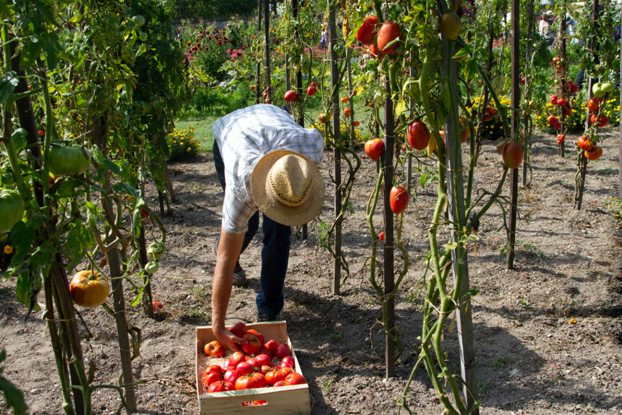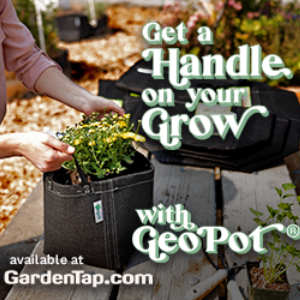There are 2 perspectives, one from the consumer’s standpoint, and the other from those who label their products “organic” for use by growers growing plants organically.

For many consumers, there is some degree of confusion as to what constitutes the designation as being “organic.” A food product labeled as such could mean several things, (i) the product was grown without the use of manufactured chemicals, primarily fungicides, insecticides and herbicides as well as (ii) exclusion of chemical fertilizer use. A food product may be marketed as being “organic” based only on the fact that none of the 3 pesticides were used in their production, but chemical fertilizers were. For some, such food products would be acceptable, while for others, the use of chemical fertilizers would also make such a produced food product unacceptable.
The USDA Organic certification program covers the marketing of products nationwide as “organic.” It is being employed by relatively few growers due to cost and the relatively low current demand in the market place for “organic” products, although that demand seems to be increasing. For marketing within a state, organic certification programs vary considerably from state to state, adding another degree of customer confusion, for what constitutes a product designation as “organic” may in one state not be so in another due to differing requirements.
There is a new label being used by growers that has come into recent use, Certified Naturally Grown (CNG). It is primarily used by small growers who can not justify the costs associated with obtaining Federal or state organic certification. There is some evidence that this designation is being accepted by consumers as a means of identifying product quality (Thomas, 2013). However, what is being identified as being CNG-grown may not mean that the food product was grown without the use of some chemicals, whether natural or manufactured, to control pests and supply essential plant nutrient elements.
A challenging application of an “organic label” is for those substances marketed for the growing of plants. Such a designation suggests that the product is “natural” in terms of its origin, a substance that would be in harmony with natural environmental conditions related to plant health. In addition, some would rely on a Organic Material Review Institute (OMRI) designation for acceptability of a product for use when growing plants organically. For some organic-oriented growers, chemical fertilizers are classed as “unnatural,” or even poisonous, not only to the plant itself, but equally so to the natural flora that exists in a rooting medium, whether it be soil or some other rooting substance. However, there is no evidence of such a “poisoning effect” when a chemical fertilizer is properly used. There is considerable evidence that soil flora numbers and activity are enhanced in a fertile soil when maintained by the proper use of lime and chemical fertilizers (Jones, 2012).
Does a product designated as being “organic” mean its composition is totally organic? In a recent study to determine the effect of vermicompost (worm castings) additions to a rooting medium on plant growth, it was found that the 6 vermicompost materials used ranged from as little as 30% to a high of 68% in organic content. Four of the 6 vermicomposts had organic contents less than 50% (Jones, 2013). Therefore the question, “can the 4 vermicomposts whose organic contents were less than 50% be labeled as being “organic” when the majority of their contents are inorganic?” This could be equally true for many organically-derived composts where the organic component is equal to or even less than that which is inorganic. The user looking for source products for growing plants “organically,” it may be important to know what portion of the product is indeed organic. In addition, what compounds make up the inorganic phase of the product may be what determines its effect on plants when added to a rooting medium. Therefore, whatever effect is derived from the use of a designated organic product may only be due to the inorganic components in the product. This was found to be the case in the vermicompost study (Jones, 2013), a result that was found to be in agreement with results obtained by others studying the effect of vermicomposts on plants.
Another aspect of an organic substance is its lack of consistency in elemental content. Referring back to the vermicompost study (Jones, 2013), it was found that among the 6 vermicompost materials, their nitrogen (N) content ranged from 0.77 to 3.70%. Since N is a component of various proteinaceous compounds, does this mean that the organic makeup of the vermicompost would be primarily based on its proteinaceous content, and in turn, affect its interaction when added to a plant rooting medium? Its seems, therefore, that what is identified as a defined substance (such as vermicompost) can contain a range in elemental content due to its origin and method of production as well as associated with that due to what is called the “batch process variance.” For the user of such a product, lack of consistency in component content could then translate into inconsistent plant response. The author was faced with this when searching for suitable organic sources of the essential plant nutrient elements, particularly N, when growing greenhouse tomatoes organically. The lack of consistency among the selected N sources, both in terms of elemental content as well as reactivity in the rooting medium, resulted in poor plant growth and low fruit yield. This was due to the lack of consistency in the quantity of released N into the growing medium solution for root absorption, particularly during the tomato plant’s fruiting cycle. Most organic products marketed to growers are not being adequately tested to determine plant effects. In addition, use factors based on plant species, rooting media characteristics and environmental conditions, factors that would affect plant growth, are generally lacking to guide the grower.
In summary, the issues associated with food products being designated as “organic” need to be clarified in order for the consumer to determine suitability. For the grower selecting an organic source of the nutrient elements, product content, such as percent organic versus inorganic as well as elemental form, needs to be given on the label. As mentioned earlier, it may be the inorganic portion of an organic product that will determine what effect that the product will have on a plant, not that part which is organic.
Related Articles & Free Email Newsletter
Organic Versus Conventional Cloning
Free Subscription to Email Newsletter
Article References:
Jones, Jr., J. Benton. 2012. Plant Nutrition and Soil Fertility, Second Edition. CRC Press, Boca Raton, FL.
Jones, Jr., J. Benton. 2013. Vermicompost affects on plants, pp. Garden and Greenhouse,
Thomas, Mary Ann. 2013. Label wars at farmers markets, p. 43. The Christian Science Monitor Weekly, September 9, 2013.
Jones, Jr., J. Benton. 2013. Instructions for Growing Tomatoes in the Home Garden and Greenhouse. GroSystems, Inc., Anderson, SC (available in soft cover and e-book format for Kindle at Amazon.)




Comment here